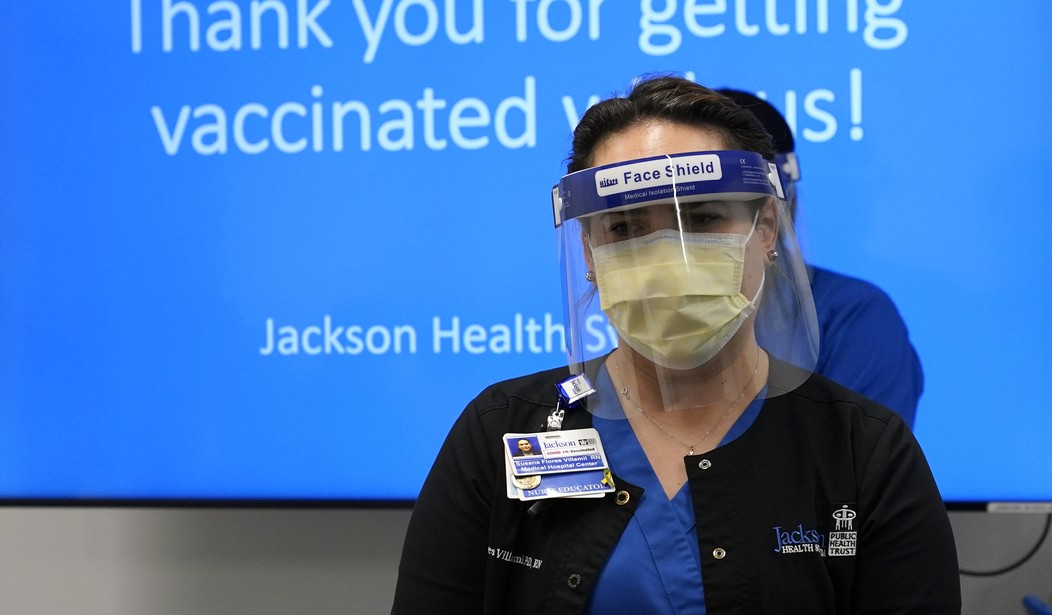You learn lots of interesting things on Twitter. Recently, I’ve learned that there is no test for the Delta variant of COVID.
Am I understanding this correctly?
The CDC says all theses new cases are the Delta variant – but there’s no test for the Delta variant?
— Catturd ™ (@catturd2) August 6, 2021
The real short answer to this is “No, you aren’t understanding that correctly.” But let’s expand on this a little.
The normal COVID test that you get from a doctor or a drugstore is pretty non-specific: It basically takes a swab sample of mucous and says, “Yes, that tastes like COVID,” or “No, that just tastes like snot.”
Now, knowing that you’re positive for COVID is information your doctor wants to know: It means you should be isolated from others who don’t have it and that you should be watched to see if you get really sick. (Just in passing, that’s not a diagnostic test: you could have a false positive, you could have inactive virus particles the test picked up. To diagnose actual COVID and to distinguish it from Influenza A, for example, they look at a bunch of other things, like the fever, muscle pain, and so on.)
From the point of view of your doctor, all they care about is “COVID yes” or “COVID no.” They aren’t going to treat you any differently if it’s the Alpha variant or the Delta variant or the Kappa or Lambda or some strain that doesn’t have a nextstrain.org name at all.
Deciding what strain it is takes a lot more work than a quick test. The sample must be sequenced, which means that the genetic code of the virus is decoded using polymerase chain reaction (PCR), which uses an enzyme to clone copies of the RNA of a virus many times — potentially billions of times — so that it can be analyzed. The result is a description of the genetic material of the virus as a sequence of amino acids, using letters to represent each amino acid. A sequence looks like this chunk of the original Wuhan-Hu-1:
MESLVPGFNEKTHVQLSLPVLQVRDVLVRGFGDSVEEVLSEARQHLKDGTCGLVEVEKGVLPQLEQ...
The sequences are then stored and analyzed using a ridiculous amount of computing. Small differences between different samples indicate mutations, and those mutations can be used to develop a phylogeny — sort of “family tree” of the virus. Those family trees form groups and those groups get Greek letter names if they’re sufficiently interesting. If you go to the phylogeny page at nextstrain.org, you can see an interactive map of the family tree, and do all sorts of interesting things like play back the evolution of the virus from the original Wuhan-Hu-2019 variant. And yes, the official name for the earliest virus is “Wuhan Hubei 2019” no matter what the PRC tells you.
The thing is, sequencing takes days or weeks and is expensive. Since it’s not much of interest for treatment, it’s not done on every sample. Instead, some proportion of the tests, chosen at random, are sent back to the CDC or other labs for sequencing. Massive data crunching follows, and the various strains are identified and added to the various data sets.
This process is like polling: You can’t look at every test, so you sample some just like a political poll picks a thousand-odd “registered votes” and asks their opinions. COVID testing is different in two essential ways, however. First of all, there’s no self-selection of the sample as there is in political polls — it doesn’t depend on the COVID samples answering the phone. The second, and really more important, is that the COVID “poll” has lots more samples. The New York Times tracker reports a little more than 828,000 COVID tests per day and it’s been reported that around 1.5% of the tests are sent for sequencing, which means around 12,420 samples getting sequenced every day.
When you see a political poll, there’s always something lurking as a footnote for the margin of error. The margin of error is a statistical measure that says how much you can trust a number. The margin of error is proportional to the square root of the sample size (for a big population and a small sample), so with 12000 samples out of 828000 tests, the margin of error is less than 1%.
What this all means is that when you hear that Delta makes up 80 percent of cases in the U.S., then 80 percent of the sequenced samples plus or minus a fraction of a percent were identified as being in the Delta family.
And that’s how CDC can say that 80 percent of U.S. cases are the Delta variant even though the up-front clinical test doesn’t distinguish among variants for an individual.










